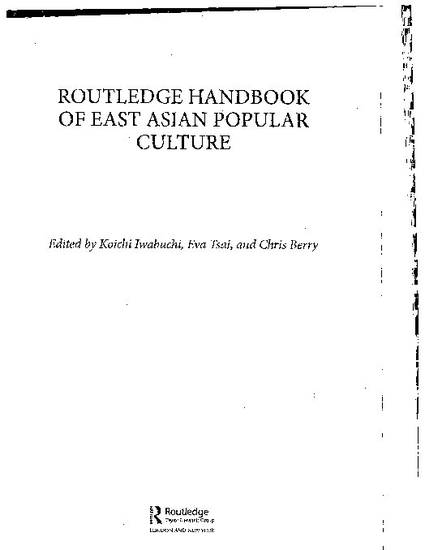
Contribution to Book
Globalism, New Media, and Cinematically Imagining the Inescapable Japan
Routledge Handbook for East Asian Popular Culture
(2017)
Abstract
Despite this being the age of globalism, when national borders are breaking down, goods and people are constantly cross boundaries, and the nation itself is under question, Japanese cinema since the 1990s is replete with representations of Japanese unable to leave Japan. Even as Japanese are traveling to other nations all the time, films by Miike, Aoyama, Kurosawa, or Kitano feature characters attempting to escape but ending up stopped at the border. While noting how kokutai theory envisioned a nation able to absorb all others—a self without an other—I reject the simplistic argument that the phenomenon of inescapablity just reflects nationalism in Japan or a conservative rejection of globalism. Looking at multiple phenomena ranging from anime to sekai-kei, the endless everyday to capitalist realism, I consider films such as Tomita Katsuya’s Saudade (Saudāji, 2011) to think about the precarious realities of inescapability and how they might relate to the problems of new media.
Keywords
- Japanese cinema,
- nationalism,
- nation,
- new media,
- globalism
Disciplines
Publication Date
2017
Editor
Koichi Iwabuchi, Chris Berry, and Eva Tsai
Publisher
Routledge
Citation Information
Aaron Gerow. "Globalism, New Media, and Cinematically Imagining the Inescapable Japan" Routledge Handbook for East Asian Popular Culture (2017) p. 86 - 92 Available at: http://works.bepress.com/aarongerow/55/